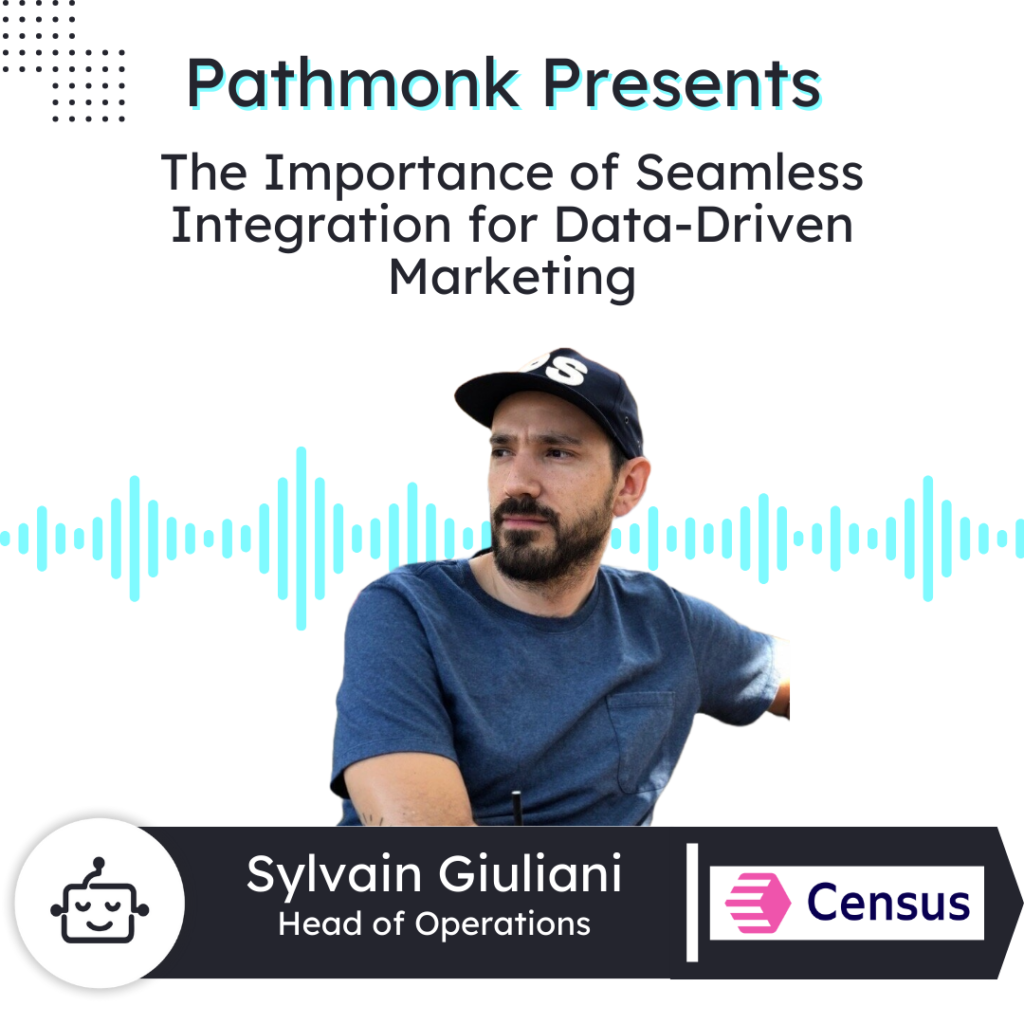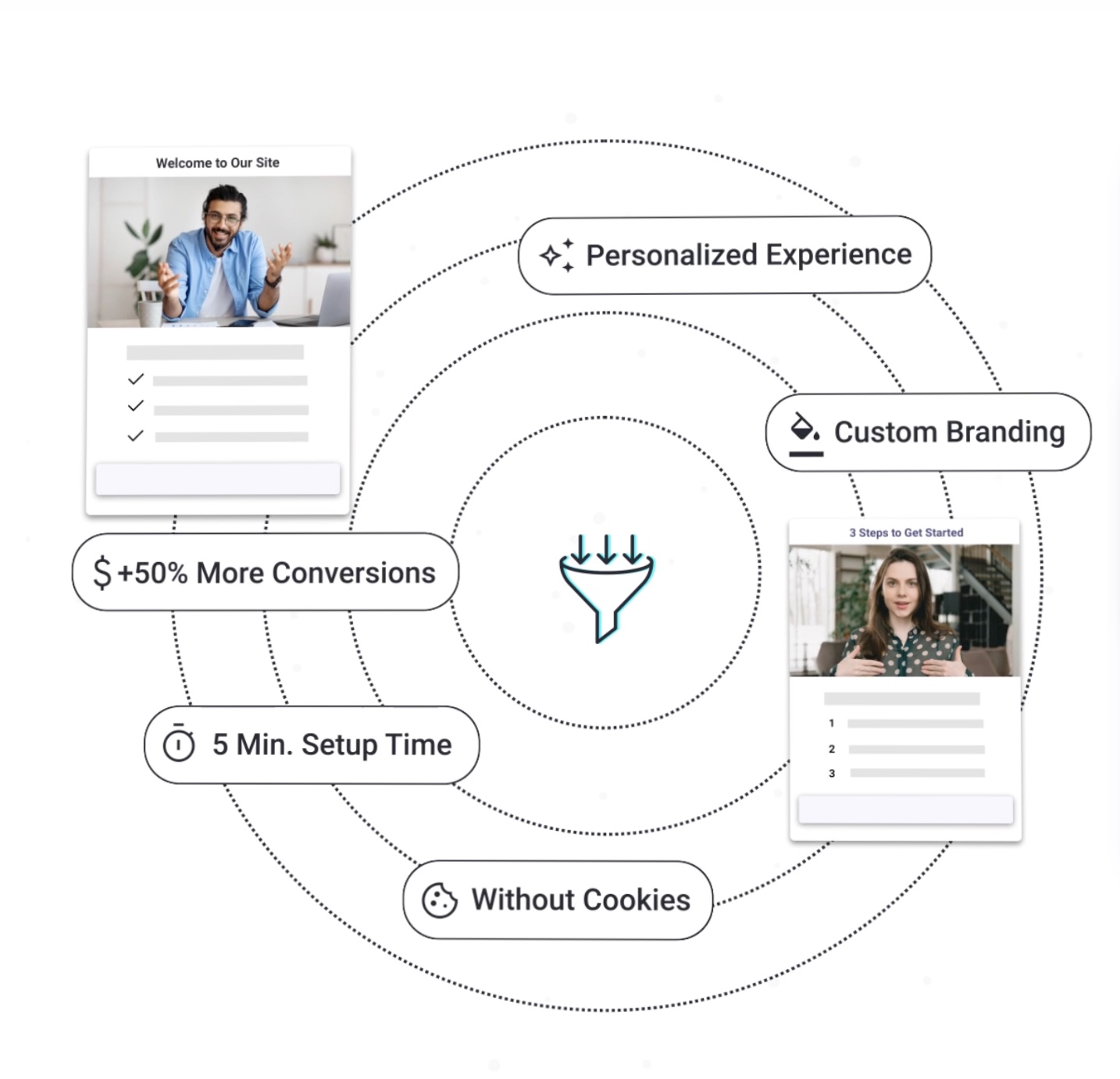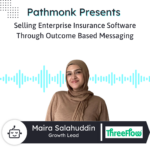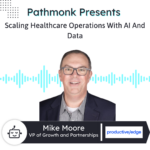
Introduction
Sylvain Giuliani, in his role as Head of Operations at Census, delves into the transformative impact of their data activation platform on marketing and sales processes.
Sylvain talks about the core functionality of Census, its ability to seamlessly connect data warehouses with various marketing and sales tools, enabling teams to harness the full potential of their customer data for highly targeted campaigns. Sylvain outlines the relevance of keeping data integrated, from operations to marketing, for any data-driven marketing strategy. This is especially true for companies with substantial amounts of customer data and a need for sophisticated marketing and sales strategies.
This is a must-watch episode for all data-driven marketers!
More Sales From Your Website With AI
Personalized interactions based on your users' behaviour to get +50% more conversions.

Ernesto Quezada: Pathmonk is the intelligent tool for website lead generation. With increasing online competition, over 98% of website visitors don’t convert. The ability to successfully show your value proposition and support visitors in their buying journey separates you from the competition. Online Pathmonk qualifies and converts leads on your website by figuring out where they are in the buying journey and influencing them in key decision moments. With relevant micro experiences like case studies, intro videos, and much more, stay relevant to your visitors and increase conversions by 50%. Add Pathmonk to your website in seconds. Let the AI do all the work and get access to 50% more qualified leads while you keep doing marketing and sales as usual. Check us on pathmonk.com. Welcome to today’s episode. Let’s talk about today’s guest. We have Sylvain from Census, head of operations there with them. How you doing today, Sil?
Sylvain Giuliani: I’m doing great. I’m excited to be here with you. Awesome.
Ernesto: Great, great to have you on and great to have Census on here with us. And I’m sure our listeners are tuning in, wondering what Census is all about. So, let’s kick it off with that, Sil. In your own words, can you tell us a little bit more?
Sylvain: Yeah, yeah. I mean, at Census, we solve a very simple problem. Usually, you have marketing teams, sales teams, go-to-market teams that know data exists. They sit in a chart, you know, they’ve seen it somewhere, and they’re like, “Oh, if only I could get access to that data in my HubSpot, my Marketo, my Braze, my Salesforce.” Right? That’s literally what we do. We connect the warehouse, the only place where people store the data, through tools like Salesforce. And we make it kind of like a no-code experience for go-to-market teams to access the data so they don’t have to send that Jira ticket that gets lost in a backlog somewhere. Right? So, once you’ve set it up, any marketing person can be like, “Yeah, I know the data exists. I select, I sync it to my field in HubSpot, Marketo, the tool, you name it, we have 200+ integrations, and that’s it.” You know, it’s that simple, but it unlocks so many new campaigns and ideas, expectations that teams can do with it. It’s remarkable.
Ernesto: Awesome, great. I know Census is the first data activation platform built on your warehouse. So, that’s really good to hear from yourself. On that note, is there a vertical or a segment? Is there an ideal ICP that Census likes to go for?
Sylvain: Yeah, I mean, the best company for us, sadly, there’s not a vertical. But the way I describe that is companies where there’s tons of customers that generate data and then the asymmetry with the go-to-market team, whether it’s a marketing sales team, is very small. So, it means companies that focus on a PLG motion, like Canva or Figma, where they have millions of users that there will never be enough humans to sell to everyone. That’s a good example. Or more on the retail side, big brands, gaming companies like Activision. Think about how many gamers are out there playing video games, generating lots of data. They want to use that data to do better marketing campaigns, things like that. That’s the best switch for us because Census brings that kind of data leverage to those teams to channel more with the data that they have. If you’re a company selling $5-10 million deals a year, and you have a five-person sales team and 200 customers, there’s probably not that much value for a tool like us.
Ernesto: Awesome. Thank you for sharing that. On that note, is there a top client acquisition channel for Census? What would that be?
Sylvain: For us, it’s very interesting. Going back to what you talked about with Pathmonk, our top channel is really organic traffic. Community-led, people used to call that community-led, but it’s really word of mouth 2.0 for me. People talk about Census out there in the communities. They find us through classic means. They’ll be like, “Oh, what is this Census data thing?” They Google it, they come to our website. So, it’s very much this kind of organic word of mouth. Of course, we do paid channels, things like display to increase awareness, brand impressions, and capture high intent on the market. We buy keywords like Salesforce, Salesforce integration, things like that. But the main driver for us is referrals from peers or partners and agencies. For larger companies like Coca-Cola, they’ll look up to partners like Accenture to tell them what to implement to solve their problem. Accenture will do the recommendation in that story. So, that’s our main channel.
Ernesto: Perfect. Thank you so much for sharing that. That way our listeners who are tuned in can go out and visit you at getcensus.com. What role does the website play for client acquisition?
Sylvain: Going back to what you said, our website focuses a lot on the what and the how. People know that someone told them, “Hey, you should check out Census to do these things.” People come to our website to make sure it does what the other person told them it could do. So, it’s very much like, “Yes, we support your integration.” If you go to our website right now, it’s all about checking the box. Do we work with your technology stack? Do we support those objects? Do we allow you to do the email possession dreams that you have? It’s all about confirming what they are coming for here. We don’t focus too much on the why, which some people could say is a weakness of our website. If you don’t know anything about Census, you might be like, “Why should I care? What’s the purpose of this?” We made a conscious decision to be very focused on converting you to, “Yes, you came to the right place.” The role is very much a conversion. The role of the website is to convert you to the next step in the funnel, whether it’s a demo request or starting your trial, or consuming high intent assets like an ebook. That’s the role of our website.
Ernesto: Perfect. Great to hear that. On that note, Sylvain, is there any tools or tips or methods that you would recommend to our listeners for website lead generation?
Sylvain: For sure. The key thing I’ve learned through my career is that every page needs to have a purpose and be relevant to the reader. You can go down the rabbit hole of insane personalization on the website by industry, using technology like Pathmonk that does that for you on autopilot. But at the beginning, it’s about knowing who is expected to read this page on your website and what’s the next action they can take from this website. Sometimes it’s not book a demo; sometimes it’s just getting them to read something else to further their education, moving them from awareness content to education content to converting content. Think about the relevancy of those pages. There’s lots of tools out there, but also frameworks and methodologies like the AIDA framework to write good copy and messaging. It helps people understand the value of the page to them, making it relevant and personalized to the audience. Obviously, you’re going to say no to a lot of people because if I talk about specifically how to get value from Snowflake warehouse to Marketo marketing tools, if you’re a sales ops person, you probably don’t care about that. But if you’re a marketing person that uses Marketo, it’s going to be very specific to you, and you’ll be like, “Yes, I have exactly this problem. I want to learn more.” That high relevancy on the page is very important.
Ernesto: Definitely. Thank you so much for sharing those tips and methods. Let’s switch gears a little bit and talk about you as a leader. You are the head of operations at Census. What are some key tasks you like to focus on in your day-to-day work?
Sylvain: Right now, the key tasks are making sure we work on the right projects, prioritization. Operations is like a whack-a-mole department. The number of tickets and tasks is never-ending. You start with 20, you end the day with 38. How do we prioritize the right projects that deliver more value to the business? Whether it’s a big push to open a European office or allocating time to not just do firefighting but lead innovation in the company. We’re working a lot on what we call reverse outbound. Cold calling is having a bit of a revival, but sequencing emails doesn’t work anymore. What works well is using the signals that people are showing on your website and inferring what they’re trying to achieve. Collecting all that information, scoring it, and routing it to the right person, doing a lot of the work for them to make them more efficient. We route this account, give them insights, and recommend the next best action. It makes people more efficient and ensures we’re talking to the right people. That’s an example of the type of innovation projects we’re working on.
Ernesto: Awesome. That’s a nice way to approach it. In the between time, how do you stay up to date with all the marketing news, strategies, and trends out there? Is there a preferred channel you use?
Sylvain: I’m lucky to be well-connected with a lot of founders and people working at cool companies. I get push information via LinkedIn, emails, and my network. I stay in touch with the most relevant and exciting new technologies. For learning, I start with basics, watching videos on YouTube, reading content from authoritative sources, and then gradually go deeper into technical aspects. I look at open-source code on GitHub, read white papers, and start implementing things. When I need more, I reach out to people working at companies doing interesting things and learn from them. Building relationships and talking to people who have been doing it for a long time is crucial. That’s how I approach learning anything, starting with available resources and then talking to experts.
Ernesto: That’s interesting. The experience goes a long way. Let’s jump into our next section, the rapid-fire question rounds. Are you ready?
Sylvain: Let’s do it.
Ernesto: First up, what is the last book that you read?
Sylvain: The last book I read was a fiction book, “Lightbringer,” the last book in the Red Rising saga. In a more business-oriented book, the last one was “Range,” which is about being a generalist and how being a jack-of-all-trades can be a superpower compared to being a specialist. It talks about how learning something in one area can translate to unique knowledge in another field, giving you an advantage.
Ernesto: Perfect. Great reads for our listeners. If there were no boundaries in technology, what would be the one thing you would want to fix for your role as a marketer today?
Sylvain: I’m not great at time/project management. I usually hire someone to complement that weakness. I’d love AI to project me and my team to success in coordinating tasks, making us more efficient without having to hire someone just to manage my weaknesses. That would be great.
Ernesto: Great. If there’s one repetitive task you could automate, what would it be?
Sylvain: Reporting. Not just generating dashboards, but understanding the context and generating insights. AI could automate insight generation, eliminating the need for BI tools to create multiple charts. Real-time insight generation would be amazing, making reporting more efficient and proactive.
Ernesto: Definitely exciting. Lastly, you have a lot of experience already, but what is one piece of advice you would give yourself if you were to restart your journey as a marketer today?
Sylvain: I learned to code midway through my career, and it unlocked so many opportunities. If I had learned to code in year one, I would have been further along. It’s a superpower that allows you to market to developers, do things yourself, and use AI effectively. I would have learned to code faster in my marketing career.
Ernesto: Great advice, not just for yourself, but for our listeners as well. We are coming to the end of the show, but before we end, I want to give you the last word. If someone forgets everything about the interview today, what is the one thing they should remember about Census?
Sylvain: Next time you think, “I wish I had data in this tool I use,” whether it’s Marketo, HubSpot, Braze, whatever, come check us out at Census. We can get data in your tool without needing engineering help, and it just works. You can manage it yourself. That’s the last thing I would say.
Ernesto: Perfect. Thank you so much, Sylvain, for being on with us today. To our listeners, thank you for tuning in. I’m looking forward to our next episode at Pathmonk Presents. Thanks a lot, Sil.
Sylvain: Thank you for having me, Ernesto.











